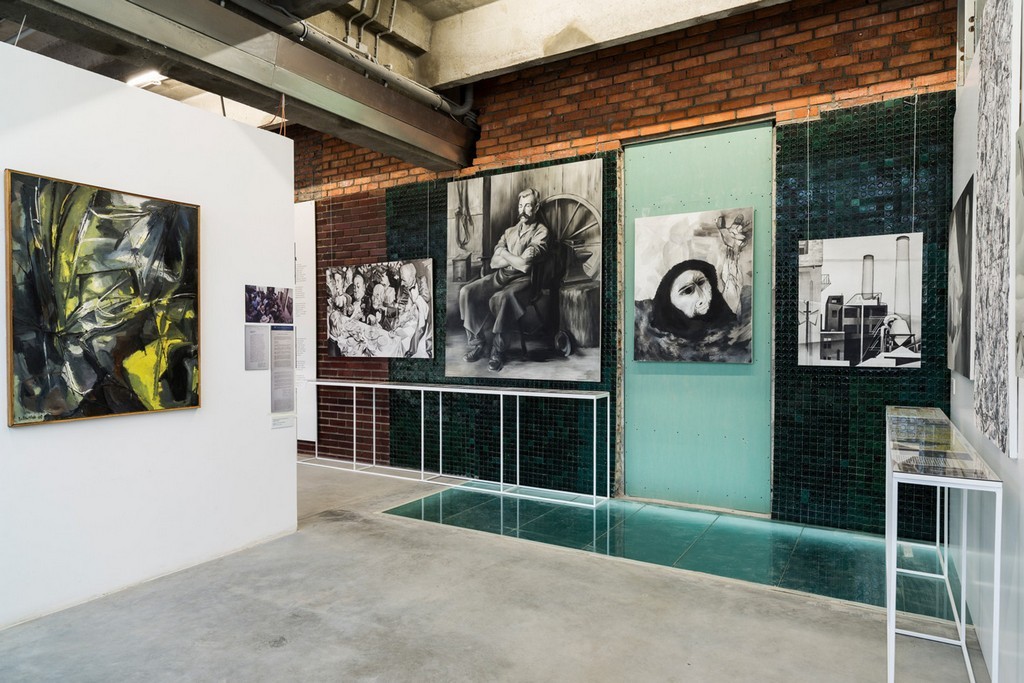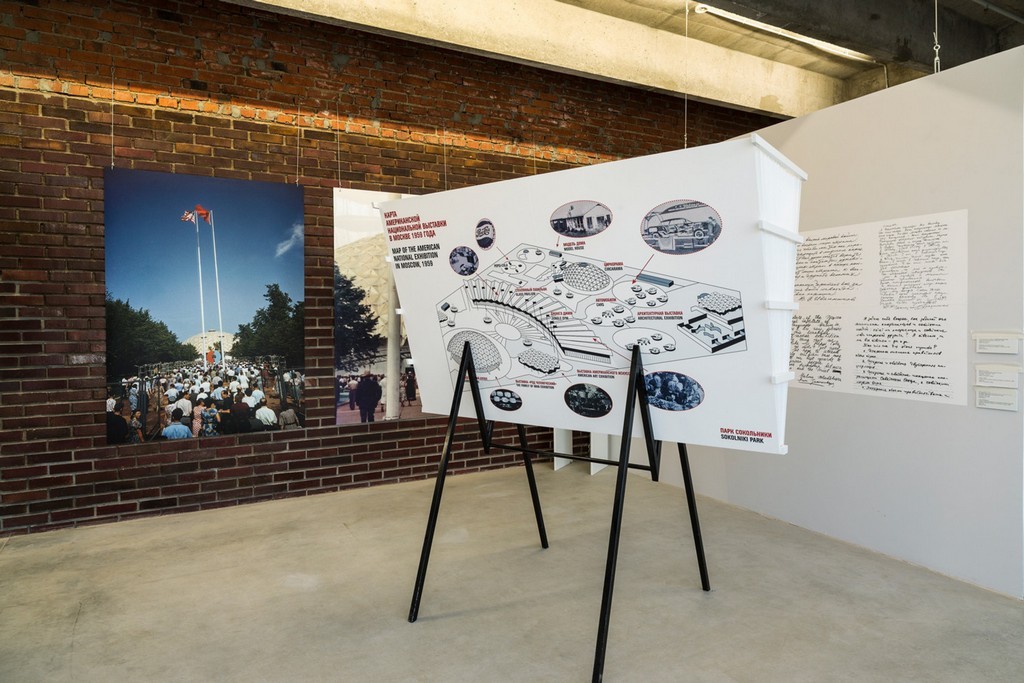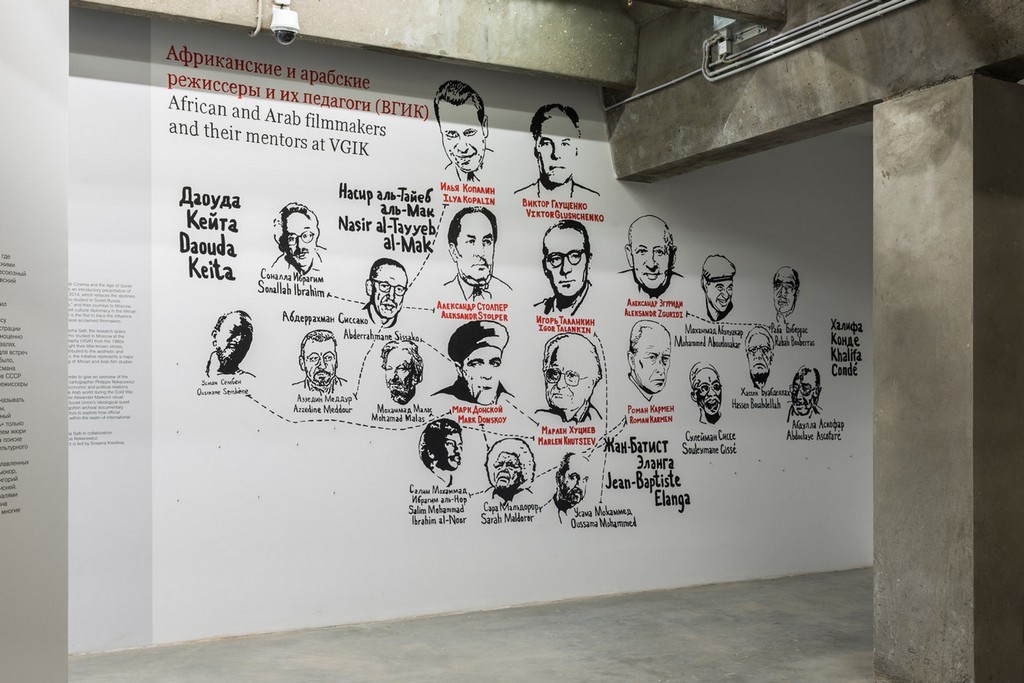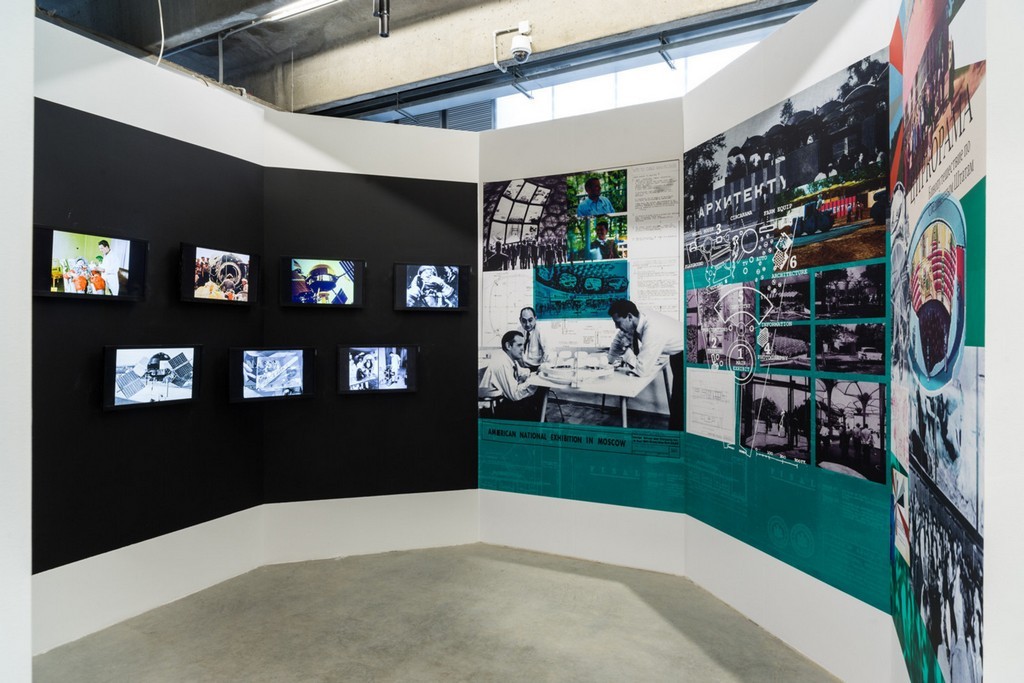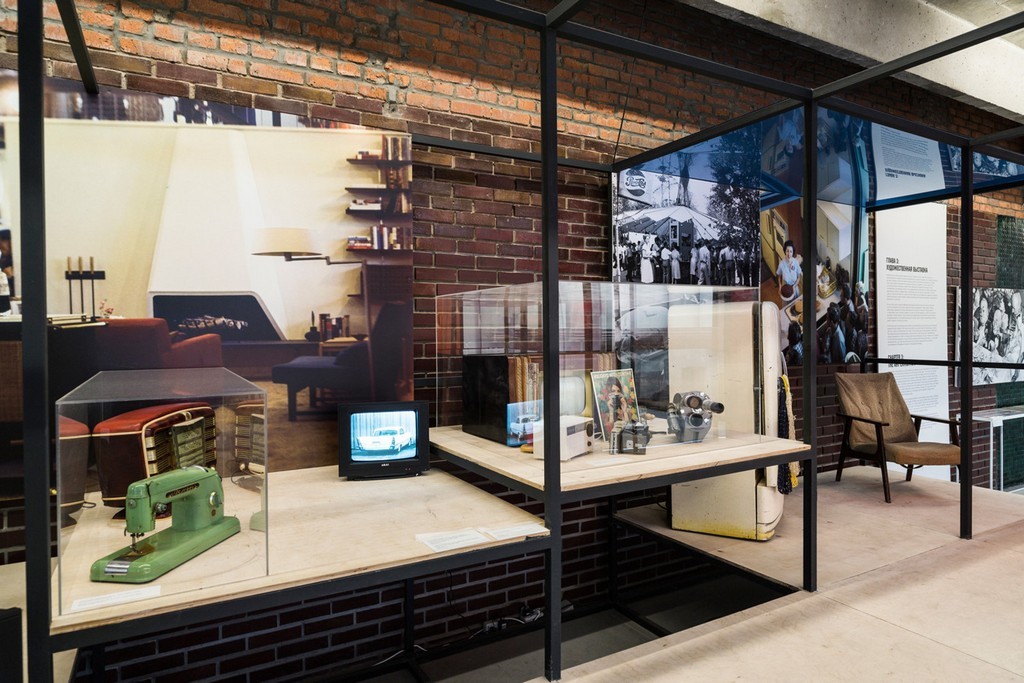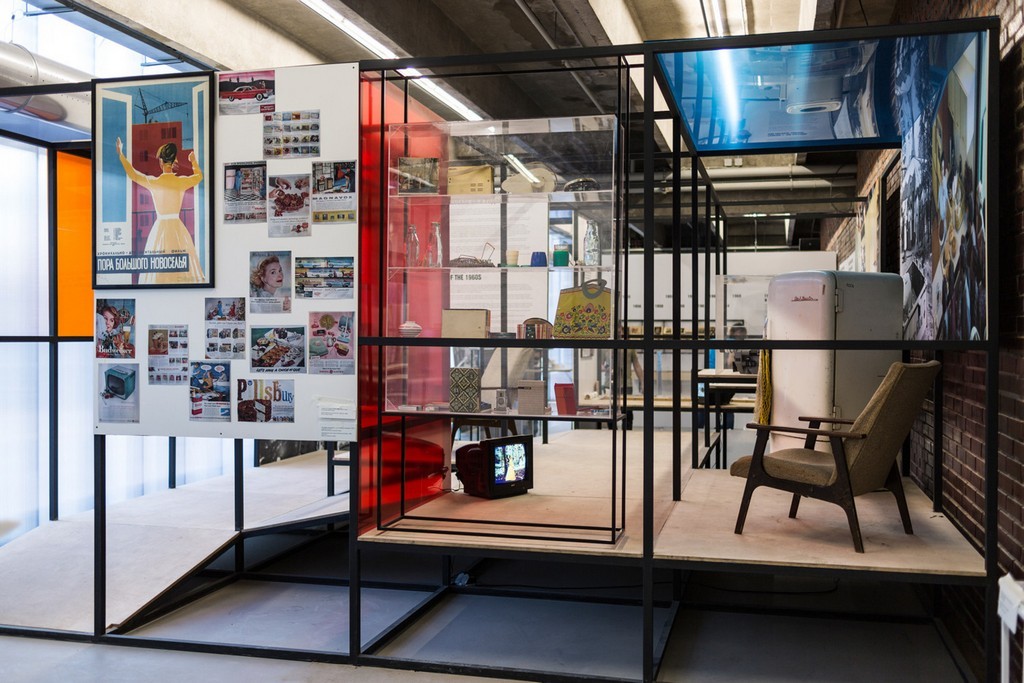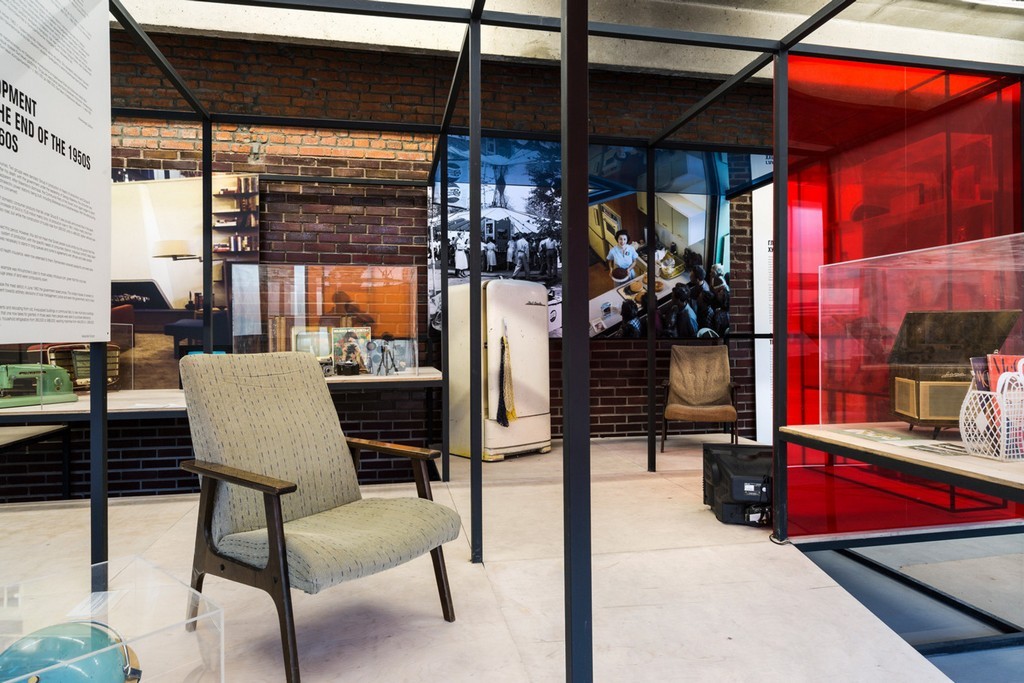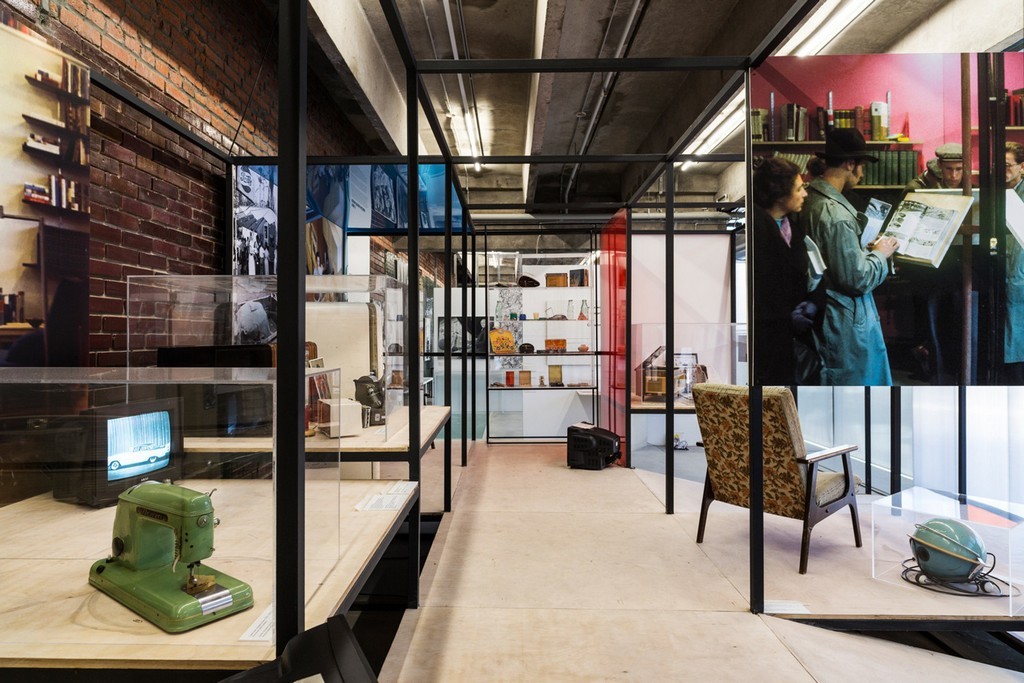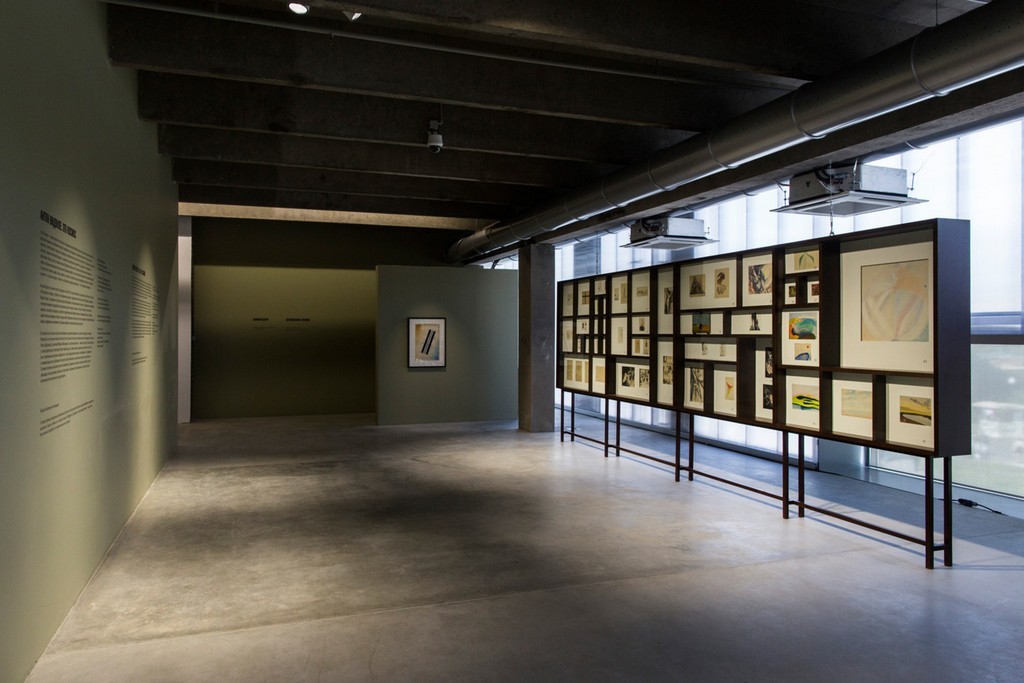Field Research: A Progress Report
12 Jun - 23 Aug 2015
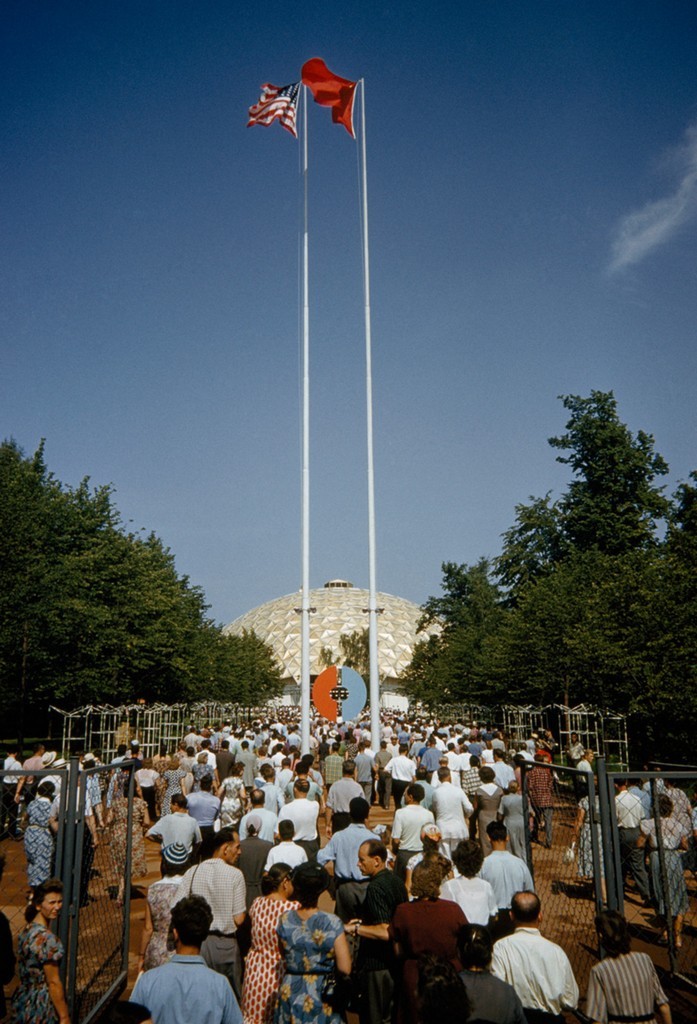
James P. Blair
A View of the American National Exhibition in Moscow, 1959. National Geographic Creative
A View of the American National Exhibition in Moscow, 1959. National Geographic Creative
FIELD RESEARCH: A PROGRESS REPORT
12 June – 23 August 2015
Curated by Koyo Kouoh and Rasha Salti in collaboration with Alexander Markov and Phillippe Rekacewicz
Established in 2013, Garage Field Research is the first cross-disciplinary platform in a contemporary art museum in Russia. Generated by the interests of artists, curators, and writers working around the world, the program gives a new perspective on overlooked or little-known events, philosophies, places, or people relating to Russian culture.
Each research project lasts 1-3 years and has no predetermined outcome, but there are regular public presentations charting the progress of each initiative from the point of view of the participating artists and curators, as well as seminars with specialists to provide a broader context for each initiative.
For the opening of the new Garage building, the four current Field Research projects are being presented at various stages of development:
- Saving Bruce Lee: African and Arab Cinema in the Era of Soviet Cultural Diplomacy (A Prologue) by Koyo Kouoh and Rasha Salti
- Black Square XVII by Taryn Simon
- This is Cosmos by Anton Vidokle
- Face-to-Face: The American National Exhibition in Moscow, 1959/2015 by Тhe Museum of American Art in Berlin
The program was initiated by Garage Chief curator Kate Fowle and is currently led by Garage curators Snejana Krasteva and Katia Inozemtseva.
SAVING BRUCE LEE: AFRICAN AND ARAB CINEMA IN THE ERA OF SOVIET CULTURAL DIPLOMACY (A PROLOGUE)
“I was a teenager watching a Bruce Lee flick with my friends at the cinema in Abidjan. Bruce Lee was our hero then. At some point in the plot, one of the bad guys was coming to attack Bruce Lee from behind while he was unaware, and suddenly one of the spectators in the theater leapt to the stage and dug a knife through the bad guy’s projection on screen. That was my first lesson in cinema.” — Philippe Lacôte, filmmaker, Сôte d'Ivoire
Saving Bruce Lee (A Prologue) is an introductory presentation of a three-year project focused on retracing the destinies of African and Arab filmmakers who studied in Soviet Russia. By making public the research-in-progress, visitors can get to know the seventeen “protagonists” and their journeys to Moscow, the key context for which was Soviet cultural diplomacy in the African and Arab worlds respectively. The research is the first of its kind to trace the influence of Soviet cinema on the work of these acclaimed filmmakers.
Developed by curators Koyo Kouoh and Rasha Salti, the research spans three generations of filmmakers who studied in the USSR at the Gerasimov Institute of Cinematography (VGIK) from the 1960s to the late 1980s. By bringing to light their little-known stories in Moscow and in other regions of the former Soviet Union, as well as influences that contributed to the aesthetic and ideological language of their films, the project represents a major breakthrough in the understanding of African and Arab film studies and history. Saving Bruce Lee is an attempt to re-write the cinematic canons and explore the place these ‘third world’ VGIK graduates occupy within it by acknowledging and researching Soviet stylistic influences in their work.
For this “prologue” exhibition, the curators are collaborating with geographer and cartographer Philippe Rekacewicz to create special maps charting the economic and political relations of the USSR with Africa and the Arab world during the Cold War. Filmmaker, Alexander Markov is also collaborating, contributing a critical deconstruction of the USSR’s ideological quest in Africa through montages of forgotten archival documentary film to explore how official representations were constructed within the realm of international socialist friendship.
A seminar will take place on July 30, 2015. Participants will include Koyo Kouoh, Rasha Salti, Catarina Simão, Filipa César and Philippe Rekacewicz. During this one-day event, curators and artists will reflect on and interrogate the academic canon of film studies. Of particular interest is the issue of how to reconcile the dissonance between oral history, personal memories and institutional archives. Artists and researchers Filipa César and Catarina Simão will reflect on their remarkable initiatives to resurrect the film archives of Guinea Bissau and Mozambique respectively. And lastly, geographer and cartographer Philippe Rekacewicz will talk about his practice.
Filmmakers include: Abderrahmane Sissako (Mauritania/Mali), Salim Cissé (Mali), Abdoulaye Ascofaré (Mali), Daouda Keita (Guinea), Khalifa Condé (Guinea), Jean-Baptiste Elanga (Congo Republic), Ousmane Sembène (Senegal), Sarah Maldoror (Guadeloupe), Salim Mohammad Ibrahim al-Noor (Sudan), Azzedine Meddour (Algeria), Mohammad Malas (Syria), Oussama Mohammed (Syria), Mohammad Abouelouakar (Morocco), Nasir al-Tayyeb al-Mak (Sudan), Hassen Bouabdellah (Algeria), Rabah Bouberras (Algeria), and writer Sonallah Ibrahim (Egypt).
Within the frames of the project on July 30 Garage will host a seminar, Research as Suture.
Information Booklet about the Garage Field Research project Saving Bruce Lee: African and Arab Cinema in the Era of Soviet Cultural Diplomacy (A Prologue).
Thanks go to Naum Kleiman; the Eisenstein Library, Moscow and especially to Ekaterina Hohlova; Gerasimov Institute of Cinematography, Moscow and especially Tatjana Krivolutskaya, Tatjana Tursunova, Elena Russinova, Oleg Shukher and Anatoly Shakhov for their assistance in the research; Jean-Michel Frodon; Bernard Eisenchitz; Philippe Lacôte; Abdoulaye Ascofaré; Ossama Mohammed; and Abderrahmane Sissako.
TARYN SIMON: BLACK SQUARE XVII
Taryn Simon collaborated with Russia’s State Atomic Energy Corporation (ROSATOM) to prepare a work of art made from nuclear material. In the year 3015, approximately one thousand years after its creation, a black square made from vitrified nuclear waste will be permanently displayed at Garage in a custom designed void that has been integrated into the new museum building.
The process of vitrification took place on May 21, 2015. This converted the radioactive waste from a volatile liquid to a stable solid mass resembling polished black glass. It is considered to be one of the safest and most effective methods for the long-term storage and neutralization of radioactive waste. Simon’s Black Square XVII is currently being stored in a concrete reinforced steel container, within a holding chamber surrounded by clay-rich soil, at the Radon nuclear waste disposal plant in Sergiev Posad, located 72 km northeast of Moscow. It will reside at the Radon facility until its radioactive properties have diminished to levels deemed safe for human exposure and exhibition.
Black Square XVII is composed of medium-level, long-term nuclear waste containing organic liquids, inorganic liquids, slurries, and chemical dusts from a nuclear plant in Kursk, as well as pharmaceutical and chemical plants in the greater Moscow region. Cast within the mass is a two-ply cylindrical steel capsule holding a letter to the future written by Taryn Simon.
Central to the artist’s concept for this project is the agreement that Garage Museum of Contemporary Art will be the repository for the artwork when it is completed, raising questions of permanence, preservation, visibility, and ownership. In effect, this is Garage’s first permanent work of art, although for centuries to come the only evidence of its existence will be the site that awaits its installation, and the plaque that tells its story.
Black Square XVII was created during the centenary year of Kazimir Malevich’s Black Square. It continues Simon’s ongoing series of works entitled Black Square, which she initiated in 2006, focusing on the consequences of man’s inventions. To create each Black Square, Simon collects objects, documents, and individuals within a black field that has precisely the same measurements as Kazimir Malevich’s 1915 Suprematist work of the same name.
Thanks go to ROSATOM State Atomic Energy Corporation, the Radon Plant in Sergiev Posad and the Radon engineering team.
ANTON VIDOKLE: THIS IS COSMOS
This is Cosmos is the first film in a planned trilogy inspired by the ideas of Russian cosmism, which is a unique phenomenon that emerged in the late 19th century, bringing together religious, philosophical, scientific and aesthetic theories united by a common idea of cosmos as a universal order.
Drawing widely on poems, philosophical texts, scientific writings, academic papers, and historical studies from followers of Cosmism, Anton Vidokle has focused on the writings of philosopher Nikolai Fyodorov, the founder of the movement. In creating his theories of the “Common Cause,” Fyodorov advocated for the development of scientific methods for the radical extension of life and the resurrection of the dead, believing that death was a mistake, “because the energy of cosmos is indestructible, because true religion is a cult of ancestors, because true social equality is immortality for all.”
This is Cosmos was filmed at locations in Moscow and Arkhangelsk regions, Altai, Kazakhstan and Crimea—regions and places that have played an important part in the history of the movement. As a non-linear history of ideas and practices related to cosmism, the film is an aesthetic exploration of the potential immanent in the utopian idea of a better world. In this way Vidokle recalls the tradition of the Russian avant-garde with their totality of thinking.
Underlining this connection, one section of A Progress Report is dedicated to works by artists of the Russian avant-garde: Kazimir Malevich and his pupils Nikolai Suetin, Ilya Chashnik, Konstantin Rozhdestvensky, Vladimir Sterligov, Ivan Kudriashov; Mikhail Matyushin’s followers Pavel Mansurov and the Ender siblings; as well as visionary architect Yakov Chernikhov. For them cosmos was no longer an abstract idea, but a very real foundation for a great experiment. They all believed in the universal power of their art and imagined a new world, challenging the laws of physics. In the context of cosmism, their utopian projects become a constructive force leading humanity toward new opportunities.
Anton Vidokle will continue filming his trilogy from June 2015.
Thanks go to The State Tretyakov Gallery, with a personal thank you to its director, Zelfira Tregulova, as well as the head of 20th Century Graphic Art, Natalya Adaskina.
The archive of the Russian Academy of Science, with a personal thank you to its director, Vitaly Afiani, and the academic secretary, Nadezhda Osipova.
The Iakov Chernikhov International Fund, with a personal thank you to its president, Andrey Chernikhov.
Roman Babichev
Konstantin Grigorishin and Olga Vashchilina
Andrey Eremin
Maria Salina and Sergey Krivosheyev
Irina Stergilova
FACE-TO-FACE: THE AMERICAN NATIONAL EXHIBITION IN MOSCOW, 1959/2015
Working closely with the MoAA, Face-to-Face: The American National Exhibition in Moscow, 1959/2015 explores the uncharted reverberations this exhibition, held in Moscow, had on culture in Soviet Russia. Through the perspective of the socio-political situation today, the “resurrection” of this legendary show aims at highlighting how crucial such “face to face” encounters were not only for culture, but also potentially for altering the course of the Cold War.
Partial reconstructions of the elements in the original exhibition, including artworks and aspects of the design will be exhibited alongside rare primary materials and artifacts, historical reviews, films, recollections and comments from visitors and tour guides. Moscow-based Americanist, Dr Victoria Zhuravleva and historian Alexander Shubin have provided academic guidance in building the cultural, as well as geopolitical context to reassess the importance of this event today. Special focus is given to the pursuit of science and technology as a common aspiration for both the USSR and USA.
Predominantly known for the provocative “Kitchen Debate” that took place between US Vice President Richard Nixon and Soviet Premier Nikita Khrushchev, the American National Exhibition took place in Sokolniki Park in central Moscow. It showcased the USA’s achievements in the fields of technology, fashion, manufacturing, and culture. Officially the exhibition provoked rigorous criticism of the consumerist society that it represented, but received great public acclaim. For A Progress Report the intentions of the original exhibition have been explored to deconstruct and better understand the actual (yet fictionalized) historical context of the event, while simultaneously exploring the impact of how narratives are affected when revisiting events in the past from the perspective of the present.
Developed in collaboration with the Museum of American Art in Berlin (MoAA).
Thanks go to Vladimir Meletin; Dan Slobin; The Kennan Institute, Woоdrow Wilson International Center for Scholars, Washington D.C.; History through the eyes of Krokodil. 20th century publishing house, Moscow; Polytechnic Museum, Moscow; Moscow Design Museum; The Masey Archives, New York and especially Beverly Payeff-Masey.
ABOUT THE ARTISTS/CURATORS
Koyo Kouoh is an exhibition maker and the founding artistic director of RAW Material Company, a center for art, knowledge and society in Dakar. She is the curator of the education program at 1:54, Contemporary African Art Fair in London. She served as curatorial advisor for documenta 12 (2007) and 13 (2012). Her most recent project includes Body Talk: Feminism, Sexuality and the Body in the work of Six African Women Artists, (WIELS, Lunds Konsthal, 49N6E - FRAC Lorraine), 2015. Besides a sustained theoretical and exhibition program at RAW Material Company, she maintains a dynamic international curatorial, advisory and judging activity. Kouoh lives and works in Dakar and Basel.
Rasha Salti is a curator and writer. She is presently an international programmer for the Toronto International Film Festival. From 2004 to 2010 she was the film programmer and creative director of ArteEast in New York. Salti’s essays have appeared in publications such as Afterall, The London Review of Books, and Naqd and she edited the book Insights into Syrian Cinema: Essays and Conversations with Filmmakers (2006). Salti lives in Beirut and works between Paris and Toronto.
Taryn Simon was born in 1975 in New York, USA, where she lives and works. Recent exhibitions include: Taryn Simon: Rear Views, A Star-forming Nebula, and the Office of Foreign Propaganda, Jeu de Paume, Paris (2015); A Polite Fiction, Louis Vuitton Foundation, Paris (2014), There Are Some Who Are in Darkness, Folkwang Museum, Essen, Germany (2013), A Living Man Declared Dead and Other Chapters I–XVIII, Museum of Modern Art, New York (2012), A Living Man Declared Dead and Other Chapters, Tate Modern, London and Neue Nationalgalerie, Berlin (2011). She is a Guggenheim fellow (2001). Simon has been selected for the exhibition All the World’s Futures at the 56th Venice Biennale, Italy (2015).
Anton Vidokle is an artist, born in Moscow and living in New York and Berlin. His work has been exhibited internationally at Documenta 13, Venice Biennale, Lyon Biennial and at Tate Modern among other. As a founder of e-flux he has produced Do it, Utopia Station poster project, and organized An Image Bank for Everyday Revolutionary Life, as well as Martha Rosler Library and Unitednationsplaza. Other works include e-flux video rental and Time/Bank, co-organized with Julieta Aranda. Vidokle is co-editor of e-flux journal along with Julieta Aranda and Brian Kuan Wood. Vidokle was resident professor at Home Workspace Program (2013-14), an educational program organized by Ashkal Alwan in Beirut where he initiated the exhibition, A Museum of Immortality. Most recently, Vidokle has exhibited films in the Montreal Biennale (2084: a science fiction show with Pelin Tan) as well as This is Cosmos (2014) at the Berlinale International Film Festival, the Shanghai Biennale, and Witte de With in Rotterdam.
The Museum of American Art in Berlin is an educational institution dedicated to assembling, preserving and exhibiting memories of modern American art shown in Europe during the 1950s and early 1960s. Since 2004 it has hosted a permanent exhibit in Berlin, with copy paintings of Abstract Expressionism, and organises temporary exhibitions about American art exhibitions, as well as housing several other collections. As Walter Benjamin—the museum’s self-appointed spokesman—explains, "Not only is the timeline closed [from 1920 to 1960] but the institution is not an art museum. In fact, by not being an art museum it is a “real museum of art”, a place where art, art history, and the art museum are being remembered."
12 June – 23 August 2015
Curated by Koyo Kouoh and Rasha Salti in collaboration with Alexander Markov and Phillippe Rekacewicz
Established in 2013, Garage Field Research is the first cross-disciplinary platform in a contemporary art museum in Russia. Generated by the interests of artists, curators, and writers working around the world, the program gives a new perspective on overlooked or little-known events, philosophies, places, or people relating to Russian culture.
Each research project lasts 1-3 years and has no predetermined outcome, but there are regular public presentations charting the progress of each initiative from the point of view of the participating artists and curators, as well as seminars with specialists to provide a broader context for each initiative.
For the opening of the new Garage building, the four current Field Research projects are being presented at various stages of development:
- Saving Bruce Lee: African and Arab Cinema in the Era of Soviet Cultural Diplomacy (A Prologue) by Koyo Kouoh and Rasha Salti
- Black Square XVII by Taryn Simon
- This is Cosmos by Anton Vidokle
- Face-to-Face: The American National Exhibition in Moscow, 1959/2015 by Тhe Museum of American Art in Berlin
The program was initiated by Garage Chief curator Kate Fowle and is currently led by Garage curators Snejana Krasteva and Katia Inozemtseva.
SAVING BRUCE LEE: AFRICAN AND ARAB CINEMA IN THE ERA OF SOVIET CULTURAL DIPLOMACY (A PROLOGUE)
“I was a teenager watching a Bruce Lee flick with my friends at the cinema in Abidjan. Bruce Lee was our hero then. At some point in the plot, one of the bad guys was coming to attack Bruce Lee from behind while he was unaware, and suddenly one of the spectators in the theater leapt to the stage and dug a knife through the bad guy’s projection on screen. That was my first lesson in cinema.” — Philippe Lacôte, filmmaker, Сôte d'Ivoire
Saving Bruce Lee (A Prologue) is an introductory presentation of a three-year project focused on retracing the destinies of African and Arab filmmakers who studied in Soviet Russia. By making public the research-in-progress, visitors can get to know the seventeen “protagonists” and their journeys to Moscow, the key context for which was Soviet cultural diplomacy in the African and Arab worlds respectively. The research is the first of its kind to trace the influence of Soviet cinema on the work of these acclaimed filmmakers.
Developed by curators Koyo Kouoh and Rasha Salti, the research spans three generations of filmmakers who studied in the USSR at the Gerasimov Institute of Cinematography (VGIK) from the 1960s to the late 1980s. By bringing to light their little-known stories in Moscow and in other regions of the former Soviet Union, as well as influences that contributed to the aesthetic and ideological language of their films, the project represents a major breakthrough in the understanding of African and Arab film studies and history. Saving Bruce Lee is an attempt to re-write the cinematic canons and explore the place these ‘third world’ VGIK graduates occupy within it by acknowledging and researching Soviet stylistic influences in their work.
For this “prologue” exhibition, the curators are collaborating with geographer and cartographer Philippe Rekacewicz to create special maps charting the economic and political relations of the USSR with Africa and the Arab world during the Cold War. Filmmaker, Alexander Markov is also collaborating, contributing a critical deconstruction of the USSR’s ideological quest in Africa through montages of forgotten archival documentary film to explore how official representations were constructed within the realm of international socialist friendship.
A seminar will take place on July 30, 2015. Participants will include Koyo Kouoh, Rasha Salti, Catarina Simão, Filipa César and Philippe Rekacewicz. During this one-day event, curators and artists will reflect on and interrogate the academic canon of film studies. Of particular interest is the issue of how to reconcile the dissonance between oral history, personal memories and institutional archives. Artists and researchers Filipa César and Catarina Simão will reflect on their remarkable initiatives to resurrect the film archives of Guinea Bissau and Mozambique respectively. And lastly, geographer and cartographer Philippe Rekacewicz will talk about his practice.
Filmmakers include: Abderrahmane Sissako (Mauritania/Mali), Salim Cissé (Mali), Abdoulaye Ascofaré (Mali), Daouda Keita (Guinea), Khalifa Condé (Guinea), Jean-Baptiste Elanga (Congo Republic), Ousmane Sembène (Senegal), Sarah Maldoror (Guadeloupe), Salim Mohammad Ibrahim al-Noor (Sudan), Azzedine Meddour (Algeria), Mohammad Malas (Syria), Oussama Mohammed (Syria), Mohammad Abouelouakar (Morocco), Nasir al-Tayyeb al-Mak (Sudan), Hassen Bouabdellah (Algeria), Rabah Bouberras (Algeria), and writer Sonallah Ibrahim (Egypt).
Within the frames of the project on July 30 Garage will host a seminar, Research as Suture.
Information Booklet about the Garage Field Research project Saving Bruce Lee: African and Arab Cinema in the Era of Soviet Cultural Diplomacy (A Prologue).
Thanks go to Naum Kleiman; the Eisenstein Library, Moscow and especially to Ekaterina Hohlova; Gerasimov Institute of Cinematography, Moscow and especially Tatjana Krivolutskaya, Tatjana Tursunova, Elena Russinova, Oleg Shukher and Anatoly Shakhov for their assistance in the research; Jean-Michel Frodon; Bernard Eisenchitz; Philippe Lacôte; Abdoulaye Ascofaré; Ossama Mohammed; and Abderrahmane Sissako.
TARYN SIMON: BLACK SQUARE XVII
Taryn Simon collaborated with Russia’s State Atomic Energy Corporation (ROSATOM) to prepare a work of art made from nuclear material. In the year 3015, approximately one thousand years after its creation, a black square made from vitrified nuclear waste will be permanently displayed at Garage in a custom designed void that has been integrated into the new museum building.
The process of vitrification took place on May 21, 2015. This converted the radioactive waste from a volatile liquid to a stable solid mass resembling polished black glass. It is considered to be one of the safest and most effective methods for the long-term storage and neutralization of radioactive waste. Simon’s Black Square XVII is currently being stored in a concrete reinforced steel container, within a holding chamber surrounded by clay-rich soil, at the Radon nuclear waste disposal plant in Sergiev Posad, located 72 km northeast of Moscow. It will reside at the Radon facility until its radioactive properties have diminished to levels deemed safe for human exposure and exhibition.
Black Square XVII is composed of medium-level, long-term nuclear waste containing organic liquids, inorganic liquids, slurries, and chemical dusts from a nuclear plant in Kursk, as well as pharmaceutical and chemical plants in the greater Moscow region. Cast within the mass is a two-ply cylindrical steel capsule holding a letter to the future written by Taryn Simon.
Central to the artist’s concept for this project is the agreement that Garage Museum of Contemporary Art will be the repository for the artwork when it is completed, raising questions of permanence, preservation, visibility, and ownership. In effect, this is Garage’s first permanent work of art, although for centuries to come the only evidence of its existence will be the site that awaits its installation, and the plaque that tells its story.
Black Square XVII was created during the centenary year of Kazimir Malevich’s Black Square. It continues Simon’s ongoing series of works entitled Black Square, which she initiated in 2006, focusing on the consequences of man’s inventions. To create each Black Square, Simon collects objects, documents, and individuals within a black field that has precisely the same measurements as Kazimir Malevich’s 1915 Suprematist work of the same name.
Thanks go to ROSATOM State Atomic Energy Corporation, the Radon Plant in Sergiev Posad and the Radon engineering team.
ANTON VIDOKLE: THIS IS COSMOS
This is Cosmos is the first film in a planned trilogy inspired by the ideas of Russian cosmism, which is a unique phenomenon that emerged in the late 19th century, bringing together religious, philosophical, scientific and aesthetic theories united by a common idea of cosmos as a universal order.
Drawing widely on poems, philosophical texts, scientific writings, academic papers, and historical studies from followers of Cosmism, Anton Vidokle has focused on the writings of philosopher Nikolai Fyodorov, the founder of the movement. In creating his theories of the “Common Cause,” Fyodorov advocated for the development of scientific methods for the radical extension of life and the resurrection of the dead, believing that death was a mistake, “because the energy of cosmos is indestructible, because true religion is a cult of ancestors, because true social equality is immortality for all.”
This is Cosmos was filmed at locations in Moscow and Arkhangelsk regions, Altai, Kazakhstan and Crimea—regions and places that have played an important part in the history of the movement. As a non-linear history of ideas and practices related to cosmism, the film is an aesthetic exploration of the potential immanent in the utopian idea of a better world. In this way Vidokle recalls the tradition of the Russian avant-garde with their totality of thinking.
Underlining this connection, one section of A Progress Report is dedicated to works by artists of the Russian avant-garde: Kazimir Malevich and his pupils Nikolai Suetin, Ilya Chashnik, Konstantin Rozhdestvensky, Vladimir Sterligov, Ivan Kudriashov; Mikhail Matyushin’s followers Pavel Mansurov and the Ender siblings; as well as visionary architect Yakov Chernikhov. For them cosmos was no longer an abstract idea, but a very real foundation for a great experiment. They all believed in the universal power of their art and imagined a new world, challenging the laws of physics. In the context of cosmism, their utopian projects become a constructive force leading humanity toward new opportunities.
Anton Vidokle will continue filming his trilogy from June 2015.
Thanks go to The State Tretyakov Gallery, with a personal thank you to its director, Zelfira Tregulova, as well as the head of 20th Century Graphic Art, Natalya Adaskina.
The archive of the Russian Academy of Science, with a personal thank you to its director, Vitaly Afiani, and the academic secretary, Nadezhda Osipova.
The Iakov Chernikhov International Fund, with a personal thank you to its president, Andrey Chernikhov.
Roman Babichev
Konstantin Grigorishin and Olga Vashchilina
Andrey Eremin
Maria Salina and Sergey Krivosheyev
Irina Stergilova
FACE-TO-FACE: THE AMERICAN NATIONAL EXHIBITION IN MOSCOW, 1959/2015
Working closely with the MoAA, Face-to-Face: The American National Exhibition in Moscow, 1959/2015 explores the uncharted reverberations this exhibition, held in Moscow, had on culture in Soviet Russia. Through the perspective of the socio-political situation today, the “resurrection” of this legendary show aims at highlighting how crucial such “face to face” encounters were not only for culture, but also potentially for altering the course of the Cold War.
Partial reconstructions of the elements in the original exhibition, including artworks and aspects of the design will be exhibited alongside rare primary materials and artifacts, historical reviews, films, recollections and comments from visitors and tour guides. Moscow-based Americanist, Dr Victoria Zhuravleva and historian Alexander Shubin have provided academic guidance in building the cultural, as well as geopolitical context to reassess the importance of this event today. Special focus is given to the pursuit of science and technology as a common aspiration for both the USSR and USA.
Predominantly known for the provocative “Kitchen Debate” that took place between US Vice President Richard Nixon and Soviet Premier Nikita Khrushchev, the American National Exhibition took place in Sokolniki Park in central Moscow. It showcased the USA’s achievements in the fields of technology, fashion, manufacturing, and culture. Officially the exhibition provoked rigorous criticism of the consumerist society that it represented, but received great public acclaim. For A Progress Report the intentions of the original exhibition have been explored to deconstruct and better understand the actual (yet fictionalized) historical context of the event, while simultaneously exploring the impact of how narratives are affected when revisiting events in the past from the perspective of the present.
Developed in collaboration with the Museum of American Art in Berlin (MoAA).
Thanks go to Vladimir Meletin; Dan Slobin; The Kennan Institute, Woоdrow Wilson International Center for Scholars, Washington D.C.; History through the eyes of Krokodil. 20th century publishing house, Moscow; Polytechnic Museum, Moscow; Moscow Design Museum; The Masey Archives, New York and especially Beverly Payeff-Masey.
ABOUT THE ARTISTS/CURATORS
Koyo Kouoh is an exhibition maker and the founding artistic director of RAW Material Company, a center for art, knowledge and society in Dakar. She is the curator of the education program at 1:54, Contemporary African Art Fair in London. She served as curatorial advisor for documenta 12 (2007) and 13 (2012). Her most recent project includes Body Talk: Feminism, Sexuality and the Body in the work of Six African Women Artists, (WIELS, Lunds Konsthal, 49N6E - FRAC Lorraine), 2015. Besides a sustained theoretical and exhibition program at RAW Material Company, she maintains a dynamic international curatorial, advisory and judging activity. Kouoh lives and works in Dakar and Basel.
Rasha Salti is a curator and writer. She is presently an international programmer for the Toronto International Film Festival. From 2004 to 2010 she was the film programmer and creative director of ArteEast in New York. Salti’s essays have appeared in publications such as Afterall, The London Review of Books, and Naqd and she edited the book Insights into Syrian Cinema: Essays and Conversations with Filmmakers (2006). Salti lives in Beirut and works between Paris and Toronto.
Taryn Simon was born in 1975 in New York, USA, where she lives and works. Recent exhibitions include: Taryn Simon: Rear Views, A Star-forming Nebula, and the Office of Foreign Propaganda, Jeu de Paume, Paris (2015); A Polite Fiction, Louis Vuitton Foundation, Paris (2014), There Are Some Who Are in Darkness, Folkwang Museum, Essen, Germany (2013), A Living Man Declared Dead and Other Chapters I–XVIII, Museum of Modern Art, New York (2012), A Living Man Declared Dead and Other Chapters, Tate Modern, London and Neue Nationalgalerie, Berlin (2011). She is a Guggenheim fellow (2001). Simon has been selected for the exhibition All the World’s Futures at the 56th Venice Biennale, Italy (2015).
Anton Vidokle is an artist, born in Moscow and living in New York and Berlin. His work has been exhibited internationally at Documenta 13, Venice Biennale, Lyon Biennial and at Tate Modern among other. As a founder of e-flux he has produced Do it, Utopia Station poster project, and organized An Image Bank for Everyday Revolutionary Life, as well as Martha Rosler Library and Unitednationsplaza. Other works include e-flux video rental and Time/Bank, co-organized with Julieta Aranda. Vidokle is co-editor of e-flux journal along with Julieta Aranda and Brian Kuan Wood. Vidokle was resident professor at Home Workspace Program (2013-14), an educational program organized by Ashkal Alwan in Beirut where he initiated the exhibition, A Museum of Immortality. Most recently, Vidokle has exhibited films in the Montreal Biennale (2084: a science fiction show with Pelin Tan) as well as This is Cosmos (2014) at the Berlinale International Film Festival, the Shanghai Biennale, and Witte de With in Rotterdam.
The Museum of American Art in Berlin is an educational institution dedicated to assembling, preserving and exhibiting memories of modern American art shown in Europe during the 1950s and early 1960s. Since 2004 it has hosted a permanent exhibit in Berlin, with copy paintings of Abstract Expressionism, and organises temporary exhibitions about American art exhibitions, as well as housing several other collections. As Walter Benjamin—the museum’s self-appointed spokesman—explains, "Not only is the timeline closed [from 1920 to 1960] but the institution is not an art museum. In fact, by not being an art museum it is a “real museum of art”, a place where art, art history, and the art museum are being remembered."

